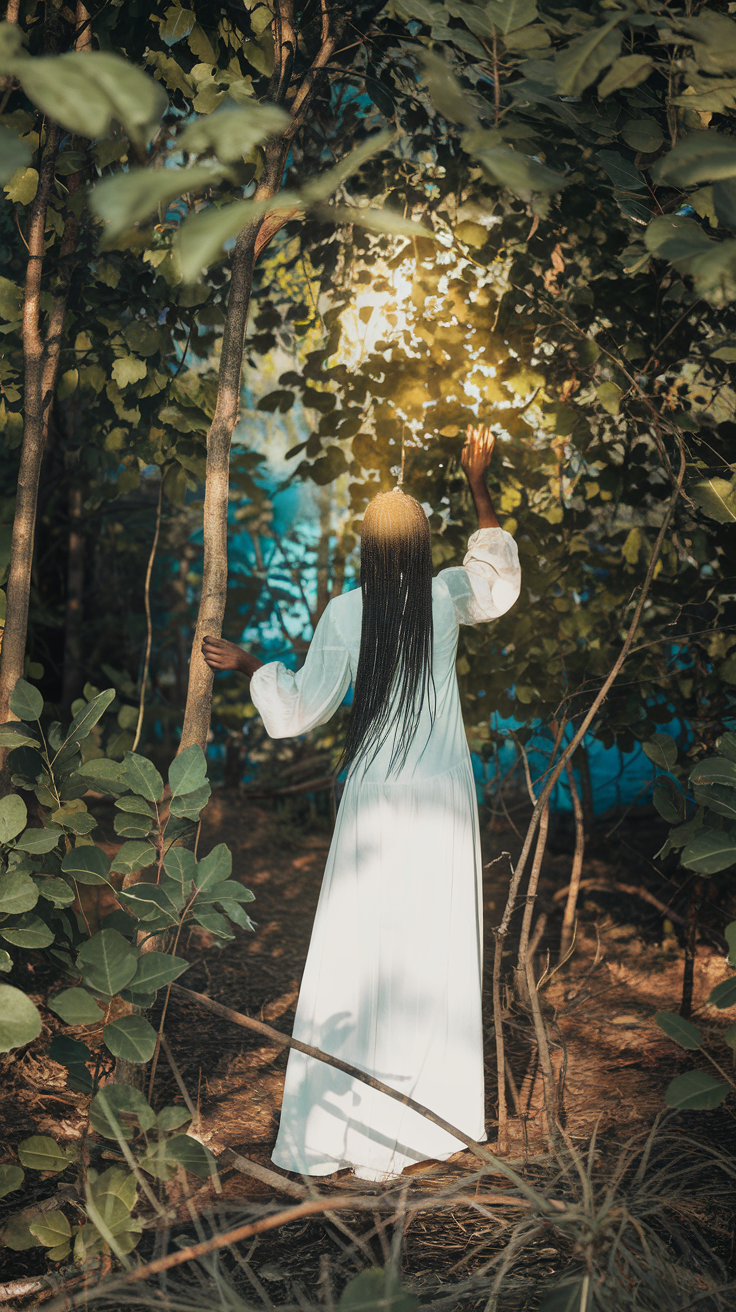- Samantha Jo
- Feb 18
- 6 min read

NOTE THIS WAS WRITTEN EARLY FEBRUARY AND I THOUGHT I HAD POSTED IT BUT IT'S NEVER TOO LATE AND IT'S STILL RELEVANT
Dreams: A Journey Through Time, Spirit, and Consciousness
In light of Martin Luther King Jr. Day this week, I’ve been reflecting on the profound concept of dreams. While Dr. King’s iconic “I Have a Dream” speech has shaped history, this post isn’t about that dream—it’s about dreams in their many forms. Since the beginning of time, I’ve been a dreamer, and dreaming was the first gift I discovered upon arriving on the earthly plane.
Over the years, I’ve unraveled layers of my ancestry, lineage, and spirit, often guided by dreams and the unseen realms. My nana, my mother’s mother, was also a dreamer. Recently, I discovered that she kept journals of her dreams throughout her life. Dreams have been a bridge between these realms, offering me insights, guidance, and connections that have shaped my life.
The Grand Canyon: A Portal of Dreaming
Years ago, during a December full supermoon, I traveled to the Grand Canyon with a dear friend. It was an impromptu journey that turned into an unforgettable spiritual experience. The land’s energy was palpable, and everything felt aligned, from the sunset to the unexpected upgrade of our hotel room.
While exploring a museum at the canyon, I felt a powerful pull to collect some driftwood—a practice I now realize connects to ancestral ties. Little did I know then that the Mojave Tribe, whose dreams shaped their spiritual and cultural practices, once called this area along the Colorado River home. Through a divination reading in the following years with my cousin, I learned about a spirit guide from the Mojave Tribe, who has walked with me in every reincarnation. I wondered if I was a part of their family in a past incarnation. When my cousin revealed my guide, everything clicked. The sticks I had collected, the spiritual pull of the canyon, and my dreams all wove together of ancestral connection.
The Mojave people honored dreams as sacred, using them to guide their leaders, medicine people, and communities. Their ceremonies included singing cycles of dreamed songs that retold myths and journeys, reinforcing their identity and spiritual strength. Learning about their practices illuminated why dreams have always felt like a cornerstone of my own spiritual path.
The sky transformed into a breathtaking masterpiece as the sun set over the canyon. My friend and I shared a joint, reminiscing about our college years and spiritual journeys, while the horizon reflected the moon's ascent.
When the moon rose, it was enormous—so close that I felt I could reach out and touch it. The air felt heavy, like the moon’s energy was pressing down on everything. Later that evening, back at the hotel, I realized I couldn’t sleep. My chest felt weighed down, and the cannabis still in my system heightened the sensation. It wasn’t an anxious feeling, but it was intense—like I was caught in the moon's gravitational pull.
This experience was entirely new for me. I had always appreciated cannabis as a companion for relaxation or heightened clarity, but that night was different. The combination of the moon’s immense presence and cannabis’s lingering effects felt overwhelming, as if my body and spirit were struggling to settle under such powerful forces.

Cannabis and Dreamwork: A Complicated Relationship
Cannabis entered my life during college. My first experience was lighthearted but ineffective—I didn’t even know how to inhale properly! Over time, I developed a relationship with cannabis that was both beautiful and challenging.
Initially, cannabis felt like a tool for relaxation and creativity, but as my spiritual journey deepened, I noticed how it began to interfere with my dreams. Sativa strains heightened my anxiety, and even indica-forward hybrids clouded my mind, creating a fog that dulled my ability to receive clear messages through dreams.
When the pandemic forced us into isolation, many of us turned to substances to cope. I realized that while cannabis has its place in ritual and introspection, it required mindfulness and moderation to avoid hindering my spiritual gifts.
Cannabis in Shamanic Practices
Shamanism is an ancient spiritual practice that predates organized religions and spans cultures worldwide. At its core, it is about connection—between the physical and spiritual realms, the self and the collective, the human and the divine. Shamans serve as intermediaries, navigating unseen dimensions to heal, guide, and retrieve wisdom for their communities.
The word "shaman" comes from the Tungus people of Siberia, but similar practices exist across continents: the Sangomas of South Africa, the Curanderos of Central America, and the medicine people of Native American tribes. What unites these traditions is the belief that all beings are interconnected and that the spirit world holds answers to our earthly dilemmas.
One of the most powerful tools in shamanic work is the altered state of consciousness, achieved through drumming, chanting, breathwork, fasting, and the sacred use of psychoactive plants. These states allow shamans to journey into the "Otherworld," encountering spirit allies, ancestors, and archetypal energies. Herbs were selected and used with intention; their properties were carefully matched to the purpose of the ritual or healing. Each herb carried unique energetic qualities and was chosen not only for its practical effects but also for its symbolic and spiritual resonance.
Dreams hold a unique place in shamanic traditions. They are seen not as random neural firings but as messages from the divine. Many indigenous cultures view dreaming as a practice in itself—a skill to be cultivated and honored. For the Mojave Tribe, dreaming was central to their leadership and medicine practices. Leaders were often chosen based on the clarity and depth of their dreams, which were considered a direct line to divine guidance.
Cannabis has been revered in many spiritual traditions for its ability to bridge the physical and spiritual realms. In shamanic practices, it’s used to expand consciousness, connect with spirit guides, and access visionary states. When approached with reverence, cannabis can enhance spiritual rituals, but it’s not a one-size-fits-all tool. In no way I'm saying what has worked for others will work for you.
If you’re considering incorporating cannabis into your spiritual work, intentionality is key:
Choose the Right Strain: Sativas can energize and uplift, while Indica support relaxation and introspection.
Set an Intention: Approach cannabis as a sacred tool, not a recreational escape.
Dose Mindfully: Start small and listen to your body to find the right balance.

Herbs for Dreaming and Rituals
Some herbs enhance dreaming, while others create protection or ground the practitioner during rituals.
Herbs for Dreaming
Mugwort (Artemisia vulgaris): Known as the "dream herb," mugwort enhances lucid dreaming and facilitates journeying. Burn it as incense or brew it into a tea before bedtime.
Blue Lotus (Nymphaea caerulea): This flower induces euphoria and vivid dreams, often used in sacred rites to connect with the divine.
Valerian Root: While primarily known for relaxation, valerian can deepen sleep and make dream recall sharper.
Calea Zacatechichi ("Dream Herb"): A favorite of the Chontal people of Mexico, this herb enhances dream clarity and provides profound visions.
Yarrow was commonly used to stop bleeding and for protection against negative spiritual influences.
Herbs for Ritual Work
Frankincense and Myrrh: These resins, burned during ceremonies, purify the space and raise spiritual vibrations.
Hyssop: Used for cleansing and protection, hyssop helps release spiritual blockages.
Rue: A powerful protector, rue wards off negative energies and enhances spiritual vision.
Bay leaves were often burned to amplify intuition and aid in receiving prophetic dreams
Juniper was burned to create a protective barrier during ceremonies.
Sage was burned to cleanse the energy field and purify spaces.
Ritual Offerings
Herbs were offered to the spirits of the land, ancestors, or deities as part of ceremonies.
Tobacco is a universal offering in many indigenous traditions, symbolizing respect and connection.
Cornmeal and herbal bundles were laid on altars or sprinkled in sacred spaces as acts of gratitude and reverence.
Dreaming as a Sacred Gift
I no longer bring flowers into my home, and I’ve significantly reduced how often I smoke. I’ve experimented with edibles but learned that keeping them in my system interferes with my dream work. Rarely do I smoke and sip tea at sunrise, meditating to receive a download. However, through conversations with other medicine women, I’ve heard mixed experiences: some have felt mounted by spirits during their cannabis journey, while others have received their most profound downloads.
Dreams have always been my portal to understanding the world beyond the veil. They’ve connected me to my ancestry, offered warnings and blessings, and illuminated paths I didn’t even know existed. Whether enhanced by cannabis, strengthened by ancestral ties, or honored as they come, dreams remain one of the most profound ways to connect with the divine. Let’s celebrate the power of dreams—not just as a vision for a better future but as a sacred gift that ties us to our past, our present, and the vast mysteries of the universe.
What are your dreams trying to tell you?




.png)
.png)




